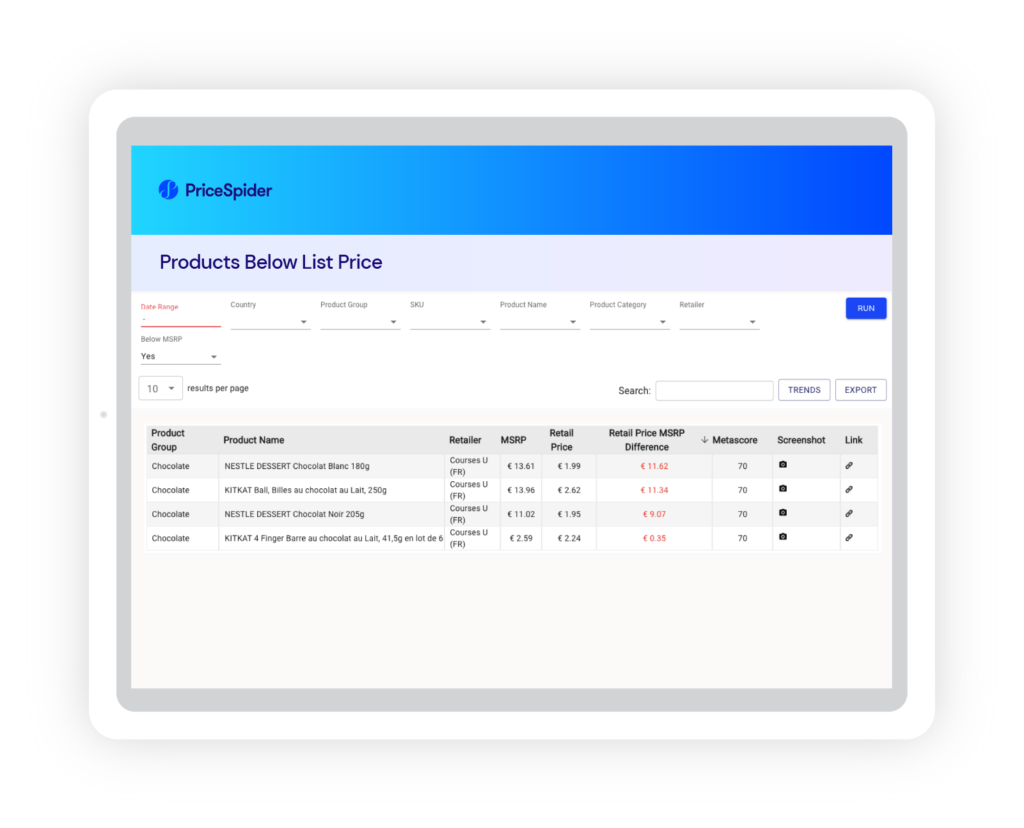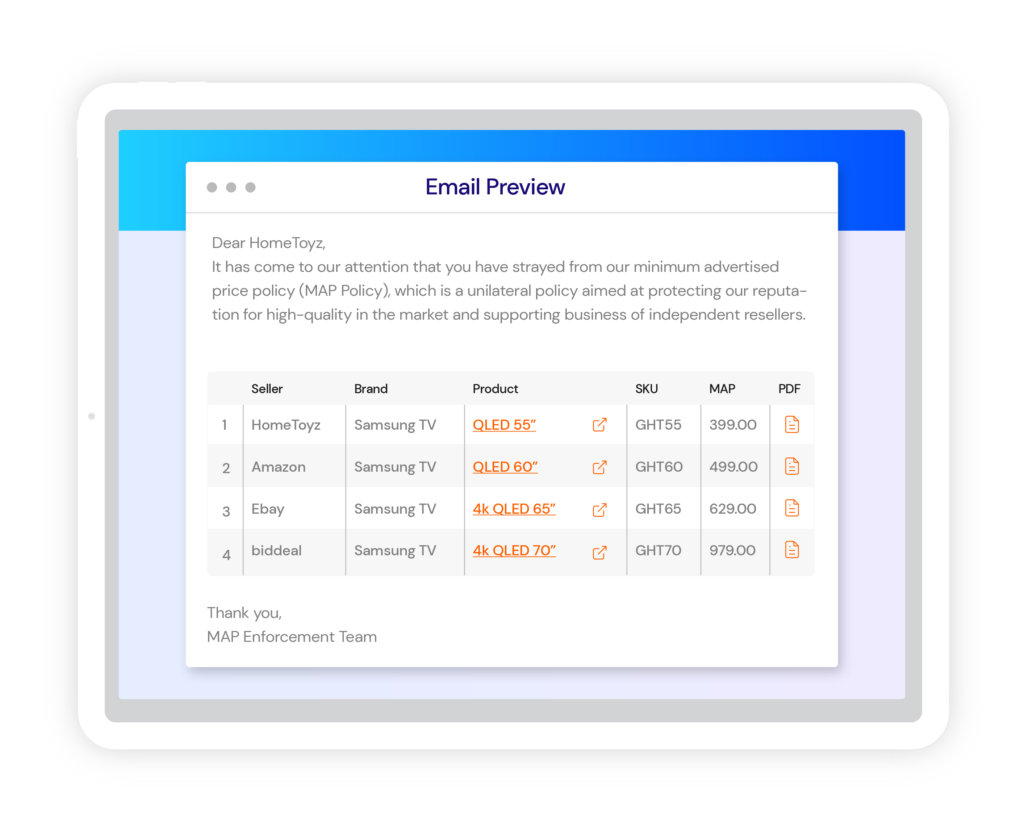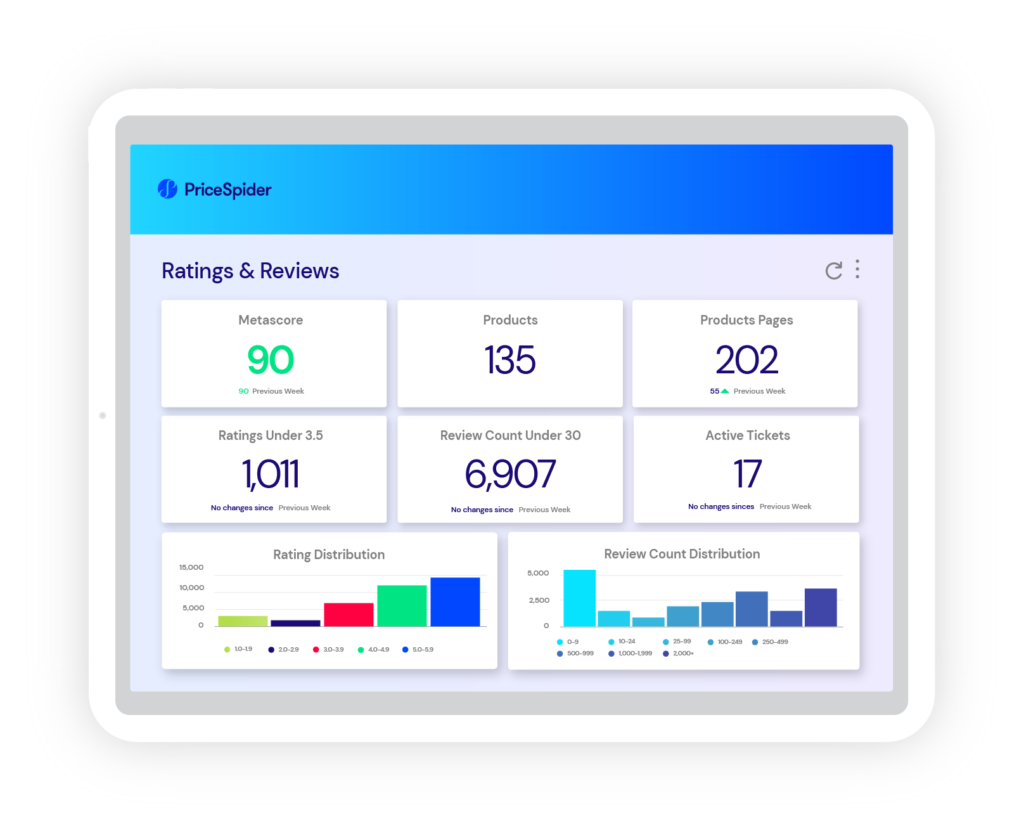Controlling that which is inherently uncontrollable. Some call it “herding cats.” It’s that feeling when you try to organize a simple outing with your friend group, but no one can get on the same page. Or when you want your kids to just pack up their toys already and get in the car BECAUSE WE WERE SUPPOSED TO LEAVE FOR GRANDMA’S AN HOUR AGO! Ahem.
Digital shelf management is the ongoing process of optimizing your brand’s position on the digital shelf. While it’s nice to think you can “set and forget” your perfectly crafted product pages, the reality is that things change quickly in ecommerce. To be successful long-term, you must continually react to problems and opportunities that arise on the digital shelf and wrangle them kitties!
Managing the digital shelf involves a combination of manual and automated processes, including:
- Performing digital shelf analytics
- Improving or maintaining your rankings in retailer search engines
- Keeping assets current and in compliance with your brand guidelines
- Monitoring and enforcing your pricing policies
- Adjusting your sponsored ad spend in reaction to changes on the shelf
- Reacting to both positive and negative ratings and reviews
- Paying attention to your competitors
The larger your catalog and the more distributors you have, the harder digital shelf management becomes. There are more places to watch, more opportunity for human error, and more distinct data sets to sift through. That’s why ecommerce brands need digital shelf software. Otherwise all your time will be spent looking for opportunities instead of taking advantage of them.
In this guide, we walk you through the major processes involved in digital shelf management and explore what it takes to pull it off well.
Perform digital shelf analytics
You can’t manage the digital shelf if you aren’t paying attention to it. Digital shelf analytics gives you eyes and ears on retail websites so you can tune into the changes and metrics that matter. It’s how you discover opportunities, identify problems, and evaluate your performance.
Most aspects of digital shelf analytics could be performed manually, assuming you have a legion of employees with unlimited time for tedious tasks. For most brands, however, the scope of products and places that encompass the digital shelf is simply too vast to keep up with unless they have specialized tools.
Many of the most valuable insights, opportunities, and problems you will identify come from how you collect and organize this information. And once you can see change over time, detect changes the moment they occur, view aggregate data, isolate a particular website or seller, and analyze specific date ranges, you’ll see details you’d otherwise miss with manual monitoring.
Using software — such as Brand Monitor by PriceSpider — brands can analyze key digital shelf metrics including their position in search results, content compliance, stock availability, MAP violations, ratings and reviews, and more.
Optimize your position in search results
Sometimes customers search for a specific product by name. On the other hand, they often choose instead to visit a retail website to browse an entire category of products. They might filter products by material, size, color, scent, capabilities, or other configurations. Your job is to align your product page with the terms and phrases customers use to find products like yours.
Unfortunately, optimizing your product pages for search engines is a bit of a moving target. Retailers are always trying to improve their algorithms to provide their customers with a better experience. That means the factors that matter most to the search engine can change over time.
Don’t forget that ratings and reviews are also changing all the time too. Consumers find new ways to describe products, features, and categories as well. As different terms gain traction and become more popular, you may have to adapt them into your pages.
It’s also crucial to understand that you’re not optimizing your product pages in a bubble. Your competitors are doing this too. Sometimes, they will find better ways to make their product appear to be the best choice. While there are plenty of ranking factors you can influence (such as ratings, clicks, and conversions), if a competitor outranks you for valuable product categories, you may want to borrow from their playbook.
This does not mean to copy them. They may have found applications, features, capabilities, and other product details that matter more to customers or prioritized them in more helpful ways.
Any time you want to climb ahead of a competitor in search results, you need to do some digging and play “spot the differences” with your product pages. What are they doing well that you’re not? What have you overlooked? Who are they talking to?
PriceSpider’s digital shelf software, Brand Monitor, helps you analyze your position on the digital shelf with its Share of Search feature. Share of Search lets you track your products’ rankings for search terms that matter most to your brand on all the retail websites you use. While these positions may not change much day-to-day, over a month, quarter, or year, you might notice some significant movement. If you were consistently in the top three results, but now you’re barely in the top 10, something probably needs to be addressed.
This is when you switch into management mode. You’ve detected a problem. Now you need to make some tweaks to get back on top.
Keep your product page assets up-to-date
In an ideal world, consumers have the same experience with your brand and perception of your products everywhere they encounter you. Unfortunately, one of the biggest challenges to digital shelf management is the sprawl of the digital shelf. You could easily have tens of thousands of SKUs for sale on hundreds of websites.
Some of those websites let you manually update your product page assets through a product information management (PIM) system, while others handle these updates themselves. Either way, ecommerce brands inevitably wind up with multiple variations of their product pages and outdated assets floating around the web. That’s not good.
If your product or branding has changed or you’ve refreshed your copy to address something misleading, updating your assets is critical. Every day outdated assets stay live, you risk misleading more customers and accumulating more negative reviews.
Even if you simply updated your assets to improve conversions or provide a better experience, you mustn’t let these changes go overlooked. Maybe you just spent thousands of dollars on a new how-to video. Or you incorporated some infographics to show off your product’s capabilities. Don’t let that investment go to waste.
Content monitoring is vital to your brand integrity. It gets you maximum mileage from your assets and the best performance from your product pages. Thankfully with software such as Brand Monitor, you’re not left to actively hunt for product pages with outdated assets. Whether your images are out of order, a keyword is missing, or entire sections are outdated, Brand Monitor compares every product page to a master copy, using image recognition and proprietary crawling technology to find and flag all discrepancies.
Armed with that information, all you have to do is make changes in the PIM or contact your representative.
React to stock availability
When your products go out of stock on a retailer’s website, do you turn off any ads driving consumers to that page? If you’re like most brands, you probably don’t. Unless you’re paying close attention to stock availability, it’s hard to recognize the opportunity.
Shoppers are not going to “wishlist” your product and come back later to buy it. Most will leave. Some will buy your competitors’ products instead because they’re available. Those ads driving traffic to your out-of-stock product pages aren’t doing you any favors. You could make much better use of that ad spend on your other products.
Brand Monitor tracks your stock availability in real time, alerting you when products are out-of-stock so you can turn off ads and reallocate your ad dollars. Not only that, but you can also watch your competitors’ stock availability. The moment they go out of stock, you can turn on ads for their branded keywords. People who search for your competitors’ products by name won’t be able to buy them, so it’s the perfect time to show them yours.
Monitor (and enforce) your pricing policy
Just because you have a minimum advertised pricing (MAP) policy (or any other kind of pricing policy) doesn’t mean your sellers will follow it. When they don’t, it can create a lot of problems.
A single policy violation always leads to more. Since price is such a critical factor in determining where people buy, other sellers have to violate your policy, too, in order to compete. It’s the domino effect also known as the dreaded “race to the bottom.” As each seller drops its price to regain a competitive advantage, your price falls lower and lower until no one benefits from selling your product. Over time, this leads to price erosion, where consumers perceive your products as lower value, which forces you to consider lowering your prices.
This isn’t just about margins and profit. Wild fluctuations in price hurt your brand integrity as well. Consumers who encounter your brand on different websites can leave with very different perspectives on your brand’s quality, value, and trustworthiness. And when people find your product for absurdly low prices, it makes it harder for them to distinguish between your product and cheap knock-offs.
So what can you do about it? Like most data points on the digital shelf, you could monitor prices manually but that’s highly inefficient and ineffective. Using repricing software, some sellers can schedule pricing changes for such small windows that you’d never detect them if an employee occasionally checks the page.
Digital shelf software such as Brand Monitor can automatically track prices for your SKUs everywhere they appear. If a seller violates your pricing policy, you’ll get an alert. Just as importantly, you’ll also always be able to tell who moved first and violated your policy before other sellers. It’s crucial that brands know which sellers start pricing wars because they are “partners” you’re better off without.

Coupled with a dedicated price-monitoring solution like Prowl, you can even manage your response workflows right through the software, so violations never slip through the cracks.

The whole point of MAP pricing is to establish the lowest price your products can be sold for. But that can’t happen unless you actively monitor and enforce your policy.
Your best retail partners will simply follow the policy because they respect your brand and value their relationship with you. Other sellers need to see that your policy has teeth before worrying about following it.
React to ratings and reviews
Customer feedback has all kinds of impact on your brand’s performance. Having a significant number of high ratings can bump you up in search results, even put you at the top of your category when consumers filter by rating. Customer feedback provides social proof for potential customers, which increases conversions.
Reviews help people evaluate experience they should expect in a more personal way. They can gauge whether another customer has a similar background or way of thinking, what situations they used your product in, and how they felt about their purchase. Ratings only reveal so much. Reviews, on the other hand, give customers “the why” behind a rating, good or bad.
To manage the digital shelf, you need to pay attention to what customers are telling you. It’s not enough to look only at your average rating over time. You need to see what ratings looked like last week, last month, and last quarter. A short-term spike may not have much impact on your average ratings, but it could be a sign of a larger problem.
You should also examine recent sentiments in your reviews. What phrases do your customers keep using? Perhaps it’s something you should work into your product page copy.
Brand Monitor helps you explore ratings and reviews by letting you view them in aggregate or by specific sellers. You can also filter by date range to find themes in your reviews.

Pay attention to competitors
You’re not alone managing the digital shelf. Your competitors are hunting for advantages and opportunities too. Sometimes they will find opportunities you missed. If you’re paying attention to what they’re doing, you may be able to piggy-back off of their work.
For example, your competitors may discover the best way to align their product pages with consumer search intent. Or, using Brand Monitor’s Share of Search feature, you may find that they’re advertising on relevant keywords you’ve never thought of before.
If you watch your competitors closely, you may learn things from their customers. What are the phrases that keep coming up in their reviews? What questions are people asking in the question-and-answer boxes? Digging deeper into a competitor’s customer feedback helps you find weaknesses to exploit more directly, differentiating factors to call attention to, or new ways to position your product.
Analyzing your competitors and reacting to what you learn is an essential part of digital shelf management.
Start managing the digital shelf
Digital shelf management starts with the right tools. If you stick with manual processes, you’ll never be able to keep up with brands who use specialized digital shelf software. There are simply too many websites and pages to monitor and too many factors to react to.
With Brand Monitor, you don’t have to pay attention to everything. All you have to do is act on the best opportunities. We’ll show them to you.
Ready to see what Brand Monitor can do for you?
Schedule a demo today.

